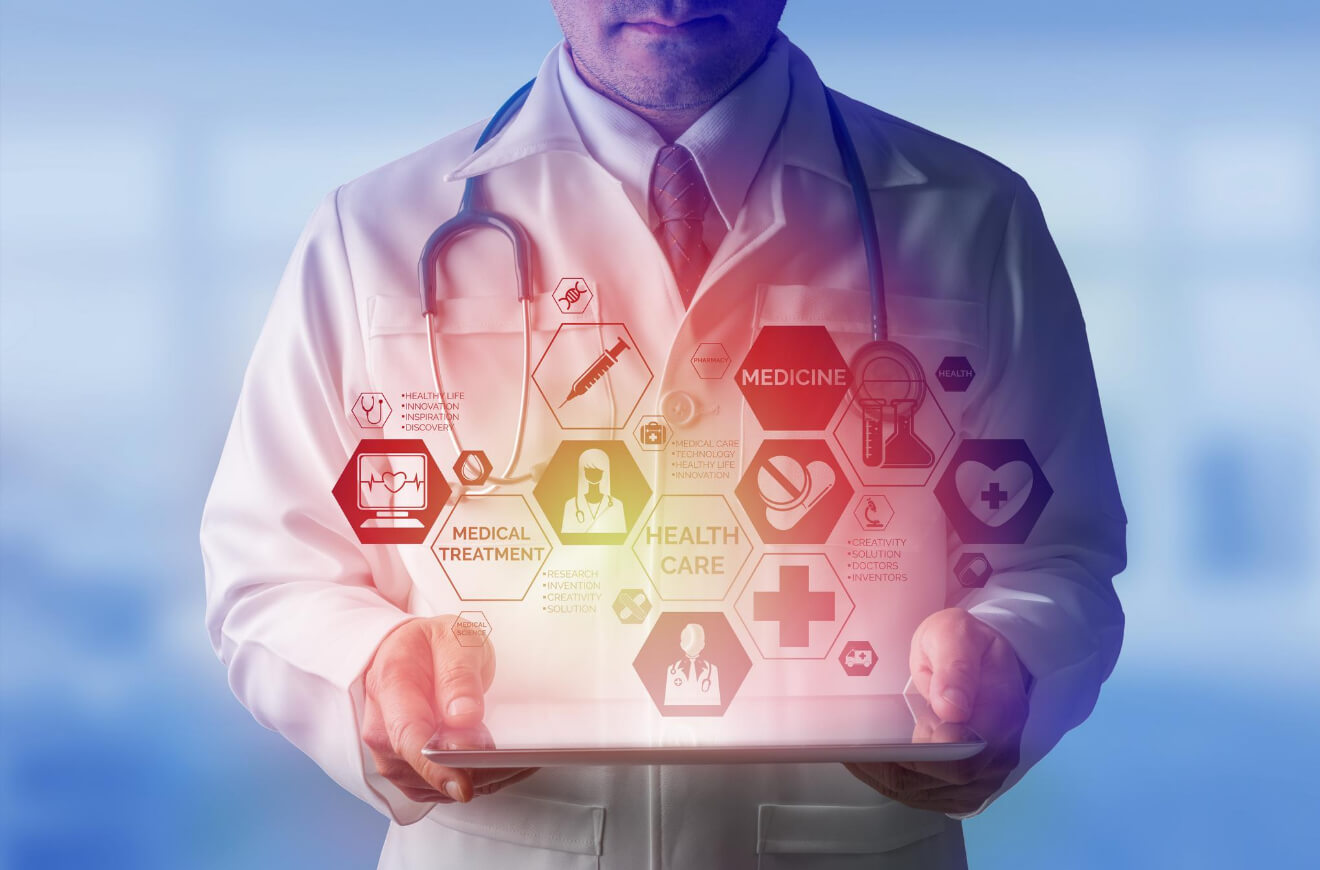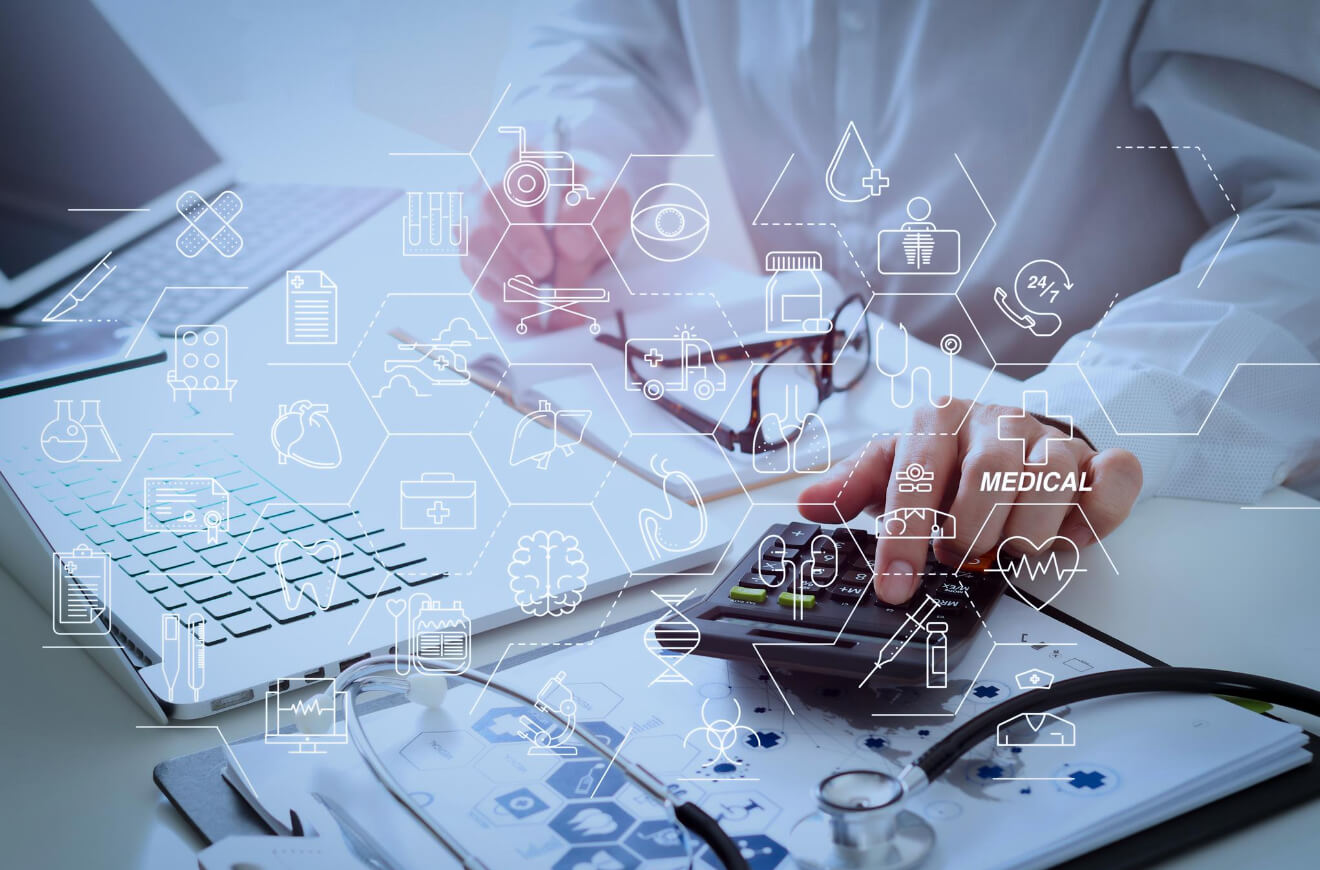
What Can Software Development Companies Offer to the Healthcare Industry Today
At the dawn of the 21st century, in many parts of the world digitalization of national health systems hasn't helped much when it comes to enabling physicians to focus on the patient, rather than the paperwork.
The problem cannot be ascribed to the process itself but rather poorly executed hospital management services. This is where healthcare custom software development can step in to deepen the doctor-patient relationship.


How does hospital management software work?
A hospital management information system or better known as hospital management software (HMS) is comprised of tools that help manage all the vital operations (pun intended) within a healthcare unit or the healthcare system in general (in developed countries).
The task before a medical software development company is to launch a digital platform that will do away with repetitive and thus unproductive tasks. Once successfully executed, hospital management software enables all staff, from the receptionist to the chief physician, to fully devote their expertise and time to patients, rather than tedious paperwork (albeit in a digital format).
Automation of medical care
Medical software development services can be quite encompassing, depending on the needs of a particular hospital or clinic but in general, they help improve appointment booking, data analysis, financial accounting, medical billing, generating reports, inventory management, the management of electronic health records, etc.
Simply put, automation is the keyword, as hospital management software should streamline the overall experience both for patients and medical staff. The automation should be noticeable from the point when patients schedule an appointment online, for instance, all the way to data reporting that is related to efficient workforce management on the part of the health institution.
Patient records management
Patient records management is needed for collecting, storing, and tracking patients' medical histories. Individual patient data, which includes everything from lab results to prescribed medicines, is updated in real-time, so physicians have the latest info on their patient's health status.
There are two types of patient records; the one used internally by hospitals for storing and processing patient information and external medical records that store data such as medication dosage that is intended for the patient to consult from time to time.
Inpatient and outpatient management
Then there are inpatient and outpatient management. The former tracks admission details and assigned physicians, while the latter deals with tests, diagnostics, and invoicing. Outpatient management manages alerts sent to patients reminding them of appointments and due payments, for example.

Medical billing
Medical billing is an integral part of a solid HMS that allows administrative staff to manage insurance claims, patient invoicing, the billing process, profit monitoring, etc. This software is most often integrated into bigger systems, such as electronic health records.
Payroll management
The financial department also stands to benefit from automated payroll management that deals with payments to staff, as well as tracking purchases and the medical facility's overall expenses.
Reporting tools
Finally, reporting tools are among the more advanced, yet requisite features that an experienced healthcare software development company can offer. Such analytic tools allow hospitals to produce in-depth accounts of their financial performance, from patient experience to revenue.
Other features an HMS can have
Apart from the five standard features listed above, a custom healthcare software development company can add any of the following features that will further enhance a hospital's day-to-day operations.
Medical research software is best-suited for university hospitals, such as Mayo Clinic, that have a research department. By using such software, hospitals get the opportunity to share their research results, as well as train and educate medical personnel on the latest advancement in the given field.
Medical imagining software is highly valuable for designing 3D models and processing CT scans (to name one area of application). Instead of using paper charts, a fine-tuned HMS will throw out 3D models of a patient's anatomy. For example, this allows orthodontists to work with a real-life model of a patient's teeth.
Moreover, medical imagining software is the first step in 3D printing or equipment and more importantly, body parts, such as prosthetics. These can include everything from coronary stents used in cardiovascular surgeries to artificial limbs.
Telemedicine boomed during the coronavirus pandemic but the numbers for online medical appointments were going up even before 2020.
Whether it's a browser window or a specialized app, being able to communicate with a doctor/patient via a video call is much more humane and efficient than exchanging e-mails. The video conferencing feature is best-suited for consultations among physicians as it allows more experts to join in online.

Medical equipment software might not be something patients can experience first-hand like telemedicine but it is just as vital for a hospital to run efficiently. Such software relieves medical staff of manual stocktaking and further equipment maintenance, as it automatically sends alerts when inventory numbers go down.
Finally, we have health-tracking apps that are user-friendly, which means they can be distributed to patients, thus unburdening the health system of additional enquiries. Needless to say, fitness apps are by far the most useful ones but dietary ones (e.g. tracking calories intake) don't lag far behind in popularity.
The main benefits of using hospital management software
In the end, we can say that the biggest benefit of healthcare software development services is the automation of repetitive tasks that ultimately results in improved user/patient experience.
Furthermore, sensitive patient data is securely collected and stored, as only authorized personnel can access it, such as the patient's personal physician. They can alter and access their patient's data in real-time, ensuring they are up to date with the patient's health status (e.g. automating even anamnesis).
On a “B2B level,” to label it as such, satellite clinics and different departments within a hospital can share data through an HMS quickly. Also, billing is made easier, as notices of payment are sent to patients and organizations automatically, ensuring the hospital's balance doesn't end up in the red.



